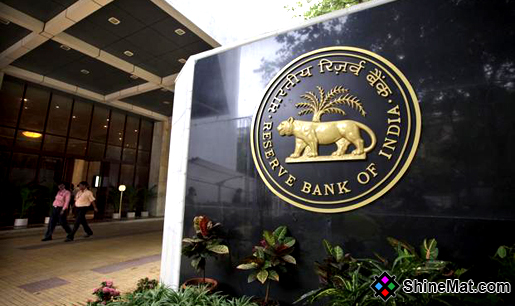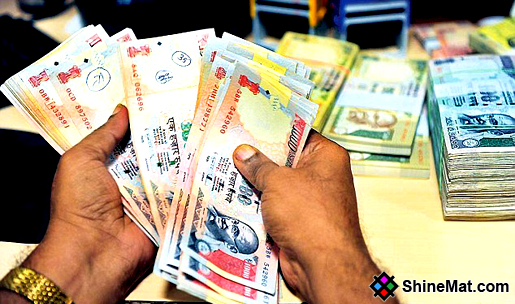The Reserve Bank of India has been traditionally providing data for the total of “Monetary resources” along with the total of “Money supply with the public.” The latter included currency with the public, other deposits with the Reserve Bank, and bank money or net demand deposits of banks. By adding net time deposits of banks to money supply with the public the total of monetary resources in the economy was obtained.
The second Working Group of the Reserve Bank of India (1997) examined the conceptual issues involved in defining money. The group was constituted primarily for the purpose of reviewing the existing analytical framework of money supply and to make suitable changes in concepts as well as methodological aspects of compilation of monetary data, keeping in view the developments in monetary theory and experience of monetary management of India. The group identified four measures of money stock as of importance for monetary analysis and policy formulation. These have been classified as M1, M2, M3 and M4

The traditional money supply with the public is extended by the inclusion of deposits with the cooperative banking sector and classified as M1 aggregate monetary resources now become M1 plus time deposits with banks; M2 and M4 extend M1 by the addition of post office savings deposits and M3 by total post office deposits respectively. This separation is potentially extremely useful for monitoring the behavior of the money stock from its narrow definition to one that is substantially larger.
The table given below summarizes the R.B.I. definitions of M1 to M4.

Definition of Monetary Aggregates as adopted by the Reserve Bank of India.
Monetary Aggregate and its definition.
M1
M2
M1+ Savings deposits with post office savings banks.
M3
M1+ Time deposits of all commercial and co-operative banks.
M4
M3 + Total deposits with post offices. (Excluding National Savings Certificates)
From among the four measures of money, M1 and M3 are the two measures which are extensively used both for policy purpose and in academic exercises. As between M1 and M3 the latter captures the balance sheet of the banking sector, the institutional category which has been the focus of the policy.
The classification adopted by the RBI is conditional by the operational considerations of availability of data. The main characteristic which separates one measure from the other is the varying degree of its liquidity, the measure being specified in the descending order of liquidity. The Working Group in its report has dealt with the “miscellaneous near money assets and money stock measures”. It has discussed certain near money assets which can be theoretically included in the definition money supply, but have been found to be unacceptable on practical grounds due to ineligibility or operational difficulties.
These include...
If money is defined on the basis of general liquidity all these assets may be included in the money supply. This is, however, in the contrast to the alternative approach of measuring money (which the RBI finds so difficult and rightly abandons) in terms of total assets and borrowing rights which poses serve estimation problems not only for developed economies but much more severely for less developed economics. This Working Group has certainly widened the coverage of monetary data which will aid the authorities and the public in their attempts to monitor monetary policy in India much more closely and clearly.
The Working Group on Money Supply, Analytics and the Methodology of compilation was setup by the Reserve Bank of India in December 1997. The Group submitted is report on money supply compilation in June 1998.
The Working Group has proposed compilation of four monetary aggregates on the basis of the balance sheet of the banking sector in conformity with the norm of progressivity in terms of liquidity.
M0 (monetary base i.e. reserve money),
M1 (narrow money),
M2 and M3 (broad money).
Further, three money liquidity aggregates in order of progressivity. L1, L2 and L3 have been proposed. The Group has also proposed the compilation of a comprehensive quarterly financial sector survey to capture the dynamic inter linkages between the banking sector and the rest of the organized financial sector.

The Table of Proposed Measures of Financial Aggregates.
A. Monetary Compilation.
Weekly Compilation.
M0 = Currency in circulation + Bankers’ Deposits with the RBI + “other” deposits with the RBI.
Fortnightly Compilation.
M1 = Currency with the public + Demand Deposits with the Banking System + “other” Deposits with the RBI.
M2 = M1 + Time liabilities portion of Savings Deposits with the Banking system + Certificates of Deposits issued by Banks + Term Deposits (excluding FCNR (B) deposits) with a contractual maturity of up to one year with the banking system.
M3 = M2 + Term deposits (excluding FCNRC (B) deposits with the contractual maturity of over one year + Call borrowings from “Non Depository” Financial Corporations by the Banking System.
B. Liquidity Aggregates.
Monthly Compilation.
L1 = M3 + all deposits with the Post Office Savings Banks (excluding NSCS).
L2 = L1 + Term Deposits with Financial Institutions + Terms borrowing by FIS + Certificates of Deposits issued by FIS.
Quarterly Compilation.
L3 = L2 + Public Deposits of Non-Banking Financial Companies Financial sector survey = Aggregate Assets and liabilities of Financial Corporations.
Reference Book: Money Banking and International Trade.
SEE ALSO: The Demand For Money
The second Working Group of the Reserve Bank of India (1997) examined the conceptual issues involved in defining money. The group was constituted primarily for the purpose of reviewing the existing analytical framework of money supply and to make suitable changes in concepts as well as methodological aspects of compilation of monetary data, keeping in view the developments in monetary theory and experience of monetary management of India. The group identified four measures of money stock as of importance for monetary analysis and policy formulation. These have been classified as M1, M2, M3 and M4
ALSO READ: Three Motives For Holding Money

The traditional money supply with the public is extended by the inclusion of deposits with the cooperative banking sector and classified as M1 aggregate monetary resources now become M1 plus time deposits with banks; M2 and M4 extend M1 by the addition of post office savings deposits and M3 by total post office deposits respectively. This separation is potentially extremely useful for monitoring the behavior of the money stock from its narrow definition to one that is substantially larger.
The table given below summarizes the R.B.I. definitions of M1 to M4.

Definition of Monetary Aggregates as adopted by the Reserve Bank of India.
Monetary Aggregate and its definition.
M1
- Currency Notes and coins with the public.
- Demand deposits of all commercial and co-operative banks.
- Other deposits held with RBI.
M2
M1+ Savings deposits with post office savings banks.
M3
M1+ Time deposits of all commercial and co-operative banks.
M4
M3 + Total deposits with post offices. (Excluding National Savings Certificates)
From among the four measures of money, M1 and M3 are the two measures which are extensively used both for policy purpose and in academic exercises. As between M1 and M3 the latter captures the balance sheet of the banking sector, the institutional category which has been the focus of the policy.
LOVE TO READ: Factors That Affects The Determination Of Money Supply
The classification adopted by the RBI is conditional by the operational considerations of availability of data. The main characteristic which separates one measure from the other is the varying degree of its liquidity, the measure being specified in the descending order of liquidity. The Working Group in its report has dealt with the “miscellaneous near money assets and money stock measures”. It has discussed certain near money assets which can be theoretically included in the definition money supply, but have been found to be unacceptable on practical grounds due to ineligibility or operational difficulties.
These include...
- Government deposits with RBI
- Cheques in the process of collection
- Unutilised credit limits
- Trade credit, and
- Deposits with non-banking companies.
If money is defined on the basis of general liquidity all these assets may be included in the money supply. This is, however, in the contrast to the alternative approach of measuring money (which the RBI finds so difficult and rightly abandons) in terms of total assets and borrowing rights which poses serve estimation problems not only for developed economies but much more severely for less developed economics. This Working Group has certainly widened the coverage of monetary data which will aid the authorities and the public in their attempts to monitor monetary policy in India much more closely and clearly.
ALSO READ: The Types Of Bank Accounts
The Working Group on Money Supply, Analytics and the Methodology of compilation was setup by the Reserve Bank of India in December 1997. The Group submitted is report on money supply compilation in June 1998.
The Working Group has proposed compilation of four monetary aggregates on the basis of the balance sheet of the banking sector in conformity with the norm of progressivity in terms of liquidity.
M0 (monetary base i.e. reserve money),
M1 (narrow money),
M2 and M3 (broad money).
Further, three money liquidity aggregates in order of progressivity. L1, L2 and L3 have been proposed. The Group has also proposed the compilation of a comprehensive quarterly financial sector survey to capture the dynamic inter linkages between the banking sector and the rest of the organized financial sector.

The Table of Proposed Measures of Financial Aggregates.
A. Monetary Compilation.
Weekly Compilation.
M0 = Currency in circulation + Bankers’ Deposits with the RBI + “other” deposits with the RBI.
Fortnightly Compilation.
M1 = Currency with the public + Demand Deposits with the Banking System + “other” Deposits with the RBI.
M2 = M1 + Time liabilities portion of Savings Deposits with the Banking system + Certificates of Deposits issued by Banks + Term Deposits (excluding FCNR (B) deposits) with a contractual maturity of up to one year with the banking system.
M3 = M2 + Term deposits (excluding FCNRC (B) deposits with the contractual maturity of over one year + Call borrowings from “Non Depository” Financial Corporations by the Banking System.
SEE THIS: The Types Of Credits/ Advances Of Bank
B. Liquidity Aggregates.
Monthly Compilation.
L1 = M3 + all deposits with the Post Office Savings Banks (excluding NSCS).
L2 = L1 + Term Deposits with Financial Institutions + Terms borrowing by FIS + Certificates of Deposits issued by FIS.
Quarterly Compilation.
L3 = L2 + Public Deposits of Non-Banking Financial Companies Financial sector survey = Aggregate Assets and liabilities of Financial Corporations.
Reference Book: Money Banking and International Trade.

Post a Comment
Please DON'T spam here. Spam comments will be deleted just after our review.